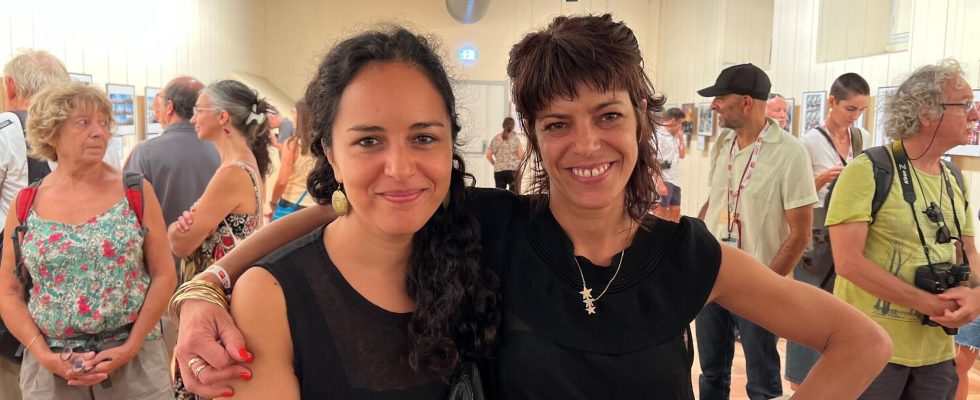Direction Perpignan in the south of France where the 35th edition of the Visa pour l’image photojournalism festival takes place until September 17. This year, no less than three series of reports are devoted to the status of women in the world and in particular in Iran with an exhibition entitled “You don’t die”. The photos that compose it are mostly anonymous and taken by amateurs. They illustrate the uprisings that followed the death of student Mahsa Amini a year ago, after her arrest by the police for “poorly wearing the veil”.
When the revolt at the death of Mahsa Amini occurs, the international press has very few images. The Iranian regime has locked everything down, no visas are granted to foreign photojournalists. The only photos that the press agencies receive are fabricated by the Tehran authorities, and therefore not very credible. However, during this time, on social networks, it was possible to follow day after day, hour after hour, the uprising.
” Some of these photos arrived very very quickly on social networks, others did not because of the Internet shutdown. Journalist Ghazal Golshiri, one of the curators of the exhibition:
” Information was the primary value in our choices. For example, on the day Mahsa Amini died on September 16, an Iranian journalist who works for an Iranian newspaper went to the hospital where Mahsa died. So she took the photo where you see her father and grandmother hugging because they just learned of their daughter’s death. »
Some of these images that can be seen in Perpignan have become iconic, such as the crowds of women who brandish their headscarves above their heads or who for the first time chant the slogan ” woman, life, freedom “. There are also photos of liberating dance scenes, videos as well. The vast majority of these images were therefore not captured by professionals. On paper, it’s a bit contrary to the philosophy of this photojournalism festival. But all this work has been scrupulously authenticated.
Marie Sumalla is the other curator of the exhibition: ” It was the only solution and so what to do ? Do not tell, or tell with amateur images ? It was as always in Perpignan to tell a reality and to show what we cannot see elsewhere. I find that the contract is completely honoured. We actually called on two Iranian experts who since 2019 have been scrutinizing social networks and doing authentication work that allowed us to publish an image of which we know the source, of which we know the place and of which we know the date. »
Now, a year after Mahsa Amini’s death, street protests in Iran have become rarer. But the resistance of the population seems intact. It is in everyday life that resistance now manifests itself, notably with women who go out into the streets without a headscarf despite the intimidation and fines inflicted on them by the regime.
Read alsoIran: Mahsa Amini’s uncle arrested a few days before the anniversary of his death
